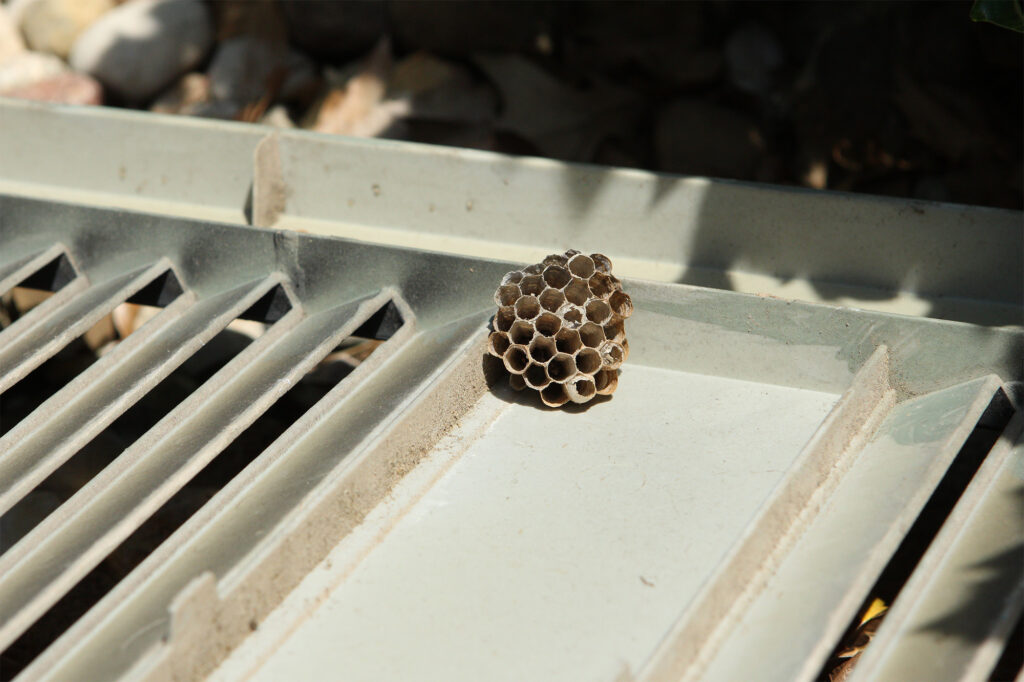Compare Exterior Shutter Materials
| Construction | |||
| Strength & Durability | |||
| Weather Resistance | |||
| Weight | |||
| Appearance | |||
| Finishes | |||
| Installation | |||
| Maintenance | |||
| Cost (ranking 1-6) | |||
| Production Time | |||
| Lifespan | |||
| Best Use | |||
| Styles | |||
| Arch Top Option | |||
Exterior window shutters are a popular feature in many American homes, adding both charm and practicality. However, they can also create an ideal hiding spot for pests, allowing insects to nest behind exterior shutters. This can be both a nuisance and a potential cause of damage. Fortunately, there are ways to prevent this issue.

Pests are commonly drawn to homes because of the shelter, warmth and moisture provided, and they especially gather within crevices – cracks around windows and door frames. The area behind exterior shutters provides an ideal nesting site because it is dark, rarely disturbed, and well protected from harsh weather. Shutters with louvers offer additional small spaces that can be appealing for a variety of insects.
The most commonly found invaders include:
While no method is 100% effective in deterring pests, there are several key strategies that can help prevent insects and other pests from building their homes behind exterior window shutters.
Maintain Regular Cleaning and Maintenance
Keeping your shutters clean and well-maintained is essential in deterring pests. A buildup of dirt, leaves, or other debris behind the shutters can attract insects looking for food or a nesting site. Regular cleaning removes any organic matter that pests might find appealing.
Shutters installed on hinges can be easily swung open to clean the areas behind. While some shutters are only available to be installed in a stationary position, they should also have some space between the building and the shutter to allow for cleaning and for moisture to evaporate.
Action Steps:
Use Repellents
Natural repellents are an effective, non-toxic way to discourage pests from nesting behind shutters. Certain scents are known to repel insects and pests, including wasps, ants, and spiders. Other nontoxic repellents can also be effective in deterring pests.
Action Steps:
Install Pest Traps
When dealing with a specific type of pest, such as wasps or rodents, installing traps can be an effective method to reduce the number of pests. Traps can capture pests before they can establish a colony behind shutters. While traps may not eliminate pests entirely, they can significantly reduce their numbers and prevent them from moving into the space behind the shutters.
Action Steps:

Regularly Check for Pest Nests and Remove Them Promptly
Even with preventive measures in place, you should regularly inspect the area behind the shutters for signs of pests. If you find a nest, take action immediately to remove it before it becomes a larger problem.
Action Steps:
Professional Pest Control
If you’ve tried all the above methods and still find that pests are making their way behind your shutters, it may be time to consult a professional pest control service. Pest control experts can assess your home, identify potential entry points, and apply appropriate treatments to eliminate the problem.
Action Steps:
Insects and pests are a nuisance in every part of the United States. By taking preventive measures such as sealing gaps, maintaining cleanliness, using natural repellents, and seeking professional help when necessary, you can ensure that your shutters remain pest-free. Regular inspection and maintenance will go a long way in keeping your home’s exterior clean and beautiful for years to come.